
Myth – ‘a widely held but false notion.’
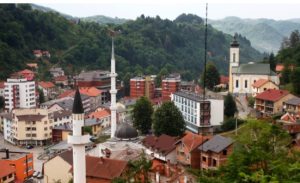
Thirty years on Srebrenica remains a myth. The fact that it’s both widely held and false is hardly surprising. For decades vast government resources have been devoted to maintaining the official narrative that Srebrenica is where 8,000 Muslim men and boys were massacred in cold blood by genocidal Serbs – allegedly the worst mass killings in Europe since the Second World War.
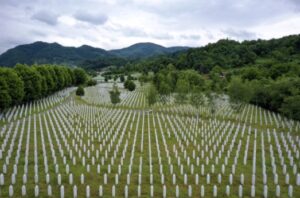
To establish a crime, however, requires what lawyers call a corpus delicti – a body of evidence. The 11,000 beautifully landscaped Muslim graves in Potocari make an impressive spectacle but they’re not evidence of a massacre. This cemetery is just part of a monumental lie designed to bury the truth and set in stone a preferred political narrative. The fact remains that for years after 1995 no one could find anything remotely approaching 8,000 bodies and the search continues to this day.
Proving a crime requires a properly established court, a fair and transparent system of due process, clearly defined laws, a rigorous process of investigation and an accumulation of reliable and accessible evidence.

The International Criminal Tribunal for the Former Yugoslavia (ICTY) signally failed to meet any of these fundamental requirements for a fair trial.
Again none of this should come as a surprise. ICTY, the illegal ad-hoc court which became the chief instrument of US/NATO policy during the Balkan conflicts, wasn’t created by accident but design. Right from the start its declared purpose was to criminalise and convict the enemies of the U.S. and its allies. A tribunal ‘publicising Serbian atrocities’ was first suggested by the CIA in 1993 and the ICTY’s mission statement, as set down by Michael P Scharf, its main architect, left no doubt about its aims and purpose:

“In creating (ICTY) the UN Security Council set three objectives: first, to educate the Serbian people, who were long misled by Milosevic’s propaganda, about the acts of aggression, war crimes and crimes against humanity committed by his regime; second, to facilitate national reconciliation by pinning prime responsibility on Milosevic and other top leaders and disclosing the ways in which the Milosevic regime had induced ordinary Serbs to commit atrocities; and third, to promote political catharsis while enabling Serbia’s new political leaders to distance themselves from the repressive policies of the past.”
Clearly such a court, set up and funded by the United States, an active participant in an ongoing war, and sitting in judgement on its enemies, was constitutionally incapable of delivering impartial justice. But what it could and did deliver was a platform for a false history of events in the Balkans that justified military intervention and the destruction of Yugoslavia.
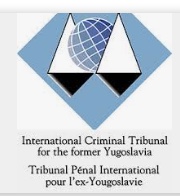
The tribunal’s primary concern was never justice but geopolitics. The finding of genocide at Srebrenica – the so called ‘adjudicated genocide’ – had no foundation in fact. It was a fiction that has been at the heart of the official narrative ever since. It is repeated ad nauseam to legitimise US/NATO action, however criminal. But endlessly repeating a lie doesn’t make it true.
At least the extent of the conspiracy to cover up what really happened and pervert the course of justice is now fully apparent. It was a meticulously planned deception on an epic scale – straight out of the Nazi playbook of the Big Lie where size matters – the bigger the lie the more likely it will be believed.

To that end the Washington based PR firm, Ruder Finn, targeted the American Jewish community with a campaign comparing Bosnian Serbs to Nazis. Company director James Harff knew instantly they had struck gold:

‘There was an immediate and visible shift in terminology in the press, using expressions with a strongly emotive element such as ethnic cleansing, concentration camps etc, all intended to invoke Nazi Germany, the gas chambers and Auschwitz. The emotional impact was so great that no one could go against it without being accused of revisionism. We had hit the mark.’
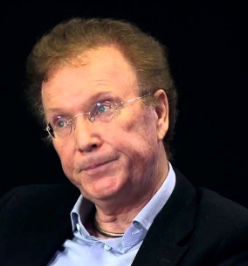
International lawyer, Chris Black, who represented President Milosevic, saw clearly and close up exactly how the system works:
‘The point of these tribunals – why they were set up – is basically propaganda. That’s their only real role. The propaganda is to put out a story about the war with which they are concerned. And the propaganda is meant to demonise the government which has been overthrown and to cover up the real role of the United States and its allies in that war.
And that’s the only role these tribunals really have. Then you have to accept, if you accept that point that the accusations that they make in these tribunals are false – and in my experience they are – why would they then have to put out false propaganda if the massacres or crimes they say took place, took place – well the fact is they didn’t.’

The United Nations had no legal power under its Charter to establish the court. It only did so under huge pressure from the United States supported by grossly exaggerated media reports of deaths, human rights abuses and unfounded threats to international security.
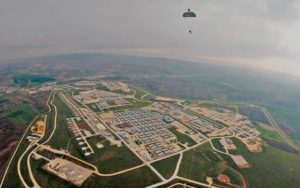
The U.S. saw valuable economic, political and strategic opportunities in plundering Yugoslavia. Mineral wealth to be exploited, cut price Industries to acquire, land to build Camp Bondsteel, now the biggest American overseas military base in the world, and room for NATO to expand eastwards. The apparently urgent need for humanitarian intervention provided the perfect pretext while ICTY lent an aura of respectability to shameless acts of western greed and aggression.
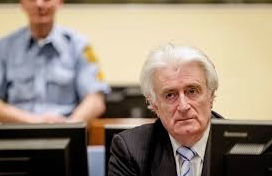
The next important step was to win and maintain public support for military action by creating a simple, unambiguous ‘good guy bad guy’ scenario. The courtroom in The Hague became the perfect stage where Serbs could be constantly paraded and vilified as evil aggressors, while everyone else was cast as wholly innocent victims. Abundant evidence of Serb victimhood was routinely suppressed in court and ruled irrelevant. For Americans to look good, the Serbs had to look bad. This was the propaganda message continually reinforced by the tribunal and a compliant mainstream media.

The full context for the bloody events that unfolded in Srebrenica in July 1995 has become clearer over the years. General Philippe Morillon, the former UN commander in Bosnia, gave vital insights in his evidence to The Hague tribunal. He testified that ‘there were no good guys and bad guys, they were all bad guys.’
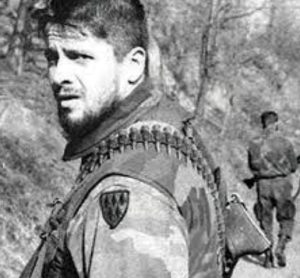
There was no monopoly of evil. Morillon was convinced that it was the systematic murderous attacks by Naser Oric, the Muslim commander based in Srebrenica, on surrounding Serb villages which had fuelled a climate of vengeance and barbarism. In the three years before the fall of Srebrenica an estimated 3,000 Serb peasant farmers had been wiped out, their homes and crops burned to the ground in nearly 200 surrounding villages. Oric had proudly shown western newsmen horrific videos of piles of dead Serbs and headless bodies from his nightly killing sprees while boasting of how he never took prisoners. Despite the existence of such appalling evidence, he was subsequently acquitted of war crimes by ICTY and walked free.
Oric commanded the 6,000 strong Muslim 28th army division based in Srebrenica in contravention of the U.N. safe areas agreement. They were heavily armed and had ready access to those weapons they had handed over to the UN. They could easily have defended the supposedly demilitarised area but chose not to. Instead, shortly before 11 July, a combined column of around 15,000 troops and Muslim men of military age who had already been drafted, made the curious decision to abandon their positions overnight and set off 30 miles through Serb controlled territory to the safe Muslim area of Tuzla.

There is strong circumstantial evidence this may have been a calculated sacrifice of their own people. Alija Izetbegovic, the extremist Muslim leader in Sarajevo had been told by Bill Clinton that it would take at least 5000 Muslim deaths to trigger international intervention in Bosnia.
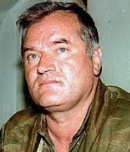
One thing is certain, when Serbian General Ratko Mladic arrived in Srebrenica it was not at the head of an invasion force. The defence editor of the London ‘Times’ saw them arrive and reported that it was between 200 and 300 strong with just three tanks.
It was only around 8 am the Serbs realised the town had been abandoned. Within two hours they had taken control without a shot being fired. Throughout the following hours their actions were recorded by a film crew. Their footage shows Mladic in a series of lengthy discussions with Dutchbat, the 80-strong force of UN Peacekeepers stationed at Potacari, leaders of the Muslim community in the town, and other representatives of the UN and aid agencies.
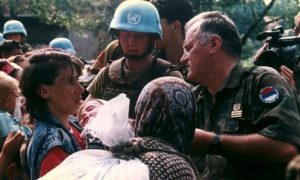
Mladic made plain to the remaining civilians, mainly women, children and the elderly, that they could choose whether to stay at Srebrenica or be bussed to safety behind Muslim lines at Tuzla, a gesture hard to reconcile with genocidal intent. He then arranged transport for those who wanted to leave. During the early and late evening, he had further discussions at the Fortuna Hotel with UN representatives which carried on until the early hours of the morning.
The various high-profile genocide trials conducted by the ICTY never settled on a final narrative of what had taken place at Srebrenica. There is little doubt that incidents of massacre or extrajudicial killing on all sides did take place but these were relatively isolated and sporadic.
Estimates of the death-tolls ranged from 2,000 to 5,000 in different trials but these figures usually conflated lawful combat deaths with extrajudicial killings causing some confusion. There is however consensus that the Muslim convoy from Srebrenica was a legitimate military target and extensive analysis of gunshot wounds confirms that the overwhelming majority of deaths were in the course of lawful combat with many due to extensive (but unmapped) Bosnian Muslim minefields. We know from Bosnian army records that well over 5,000 men reported dead or missing had active service files and were not civilians. This distinction is crucial because soldiers are not protected by the laws on genocide.
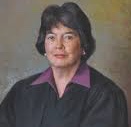
Clarity on the course of events was not helped by the court’s poor grasp of detail. Judge Patricia Wald who presided over several major trials relating to Srebrenica, stated the town’s population before the Serb takeover as 37,000. But this figure was also very close to the number of survivors the UN recorded safely arriving in Tuzla making the massacre of 8,000 Muslims a mathematical impossibility.

The task of investigating mass graves and conducting forensic investigations to identify the dead was the responsibility of the American run International Commission for Missing Persons. Ninety percent of its staff were Muslim. Investigating deaths and atrocities committed by Serbs against their coreligionists was hardly conducive to impartial justice yet went unchallenged. But most concerning was the wall of secrecy surrounding their findings.
The ICMP simply refused to share their primary DNA evidence – blood, bone and tissue samples – with either the defence or even the prosecution. The ICTY had to be content with an overview of their findings – essentially computer printouts – delivered to the court by an ICMP manager. To ensure this material would never become available for independent scrutiny outside the ICMP, laws were passed in Croatia and Bosnia granting the ICMP permanent immunity from any request for access. Why the need for such obsessive secrecy? It inevitably raises suspicion there must be something to hide.
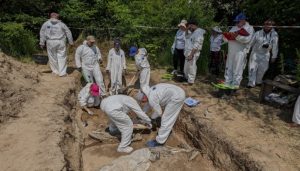
An illusion of openness however was maintained by a continuing stream of carefully managed ICMP press events. These invariably featured a small forensic team working on a small area of ground which, it was suggested, was part of a much bigger mass grave. Scientists were shown extracting small human bones from the earth for examination. Photos and video show some of this work being done without the gloves and masks needed to prevent contamination of any DNA that might be tested for identification purposes. The ICMP, while giving the impression of ceaseless activity, actually had very little to show for it. In the six years up to 2001 it had identified fewer than one hundred individuals. But then suddenly, just when the lack of bodies was becoming a serious political embarrassment, came news of a major breakthrough in DNA technology.
This new and apparently revolutionary DNA expertise involved the ‘first large scale use of kinship based DNA matching for identifying war victims…to match body parts from different mass graves to a single individual.’ Automation and scaling of DNA profiling would transform everything and allow for thousands of identifications. Sure enough within a few months the ICMP claimed to have identified almost 7,300 of those reported missing by relatives to the ICRC.
We will never know whether this was a genuine breakthrough or scientific smoke and mirrors, because of the laws which make it impossible to independently check the accuracy or veracity of ICMP material. In any event it does not alter the fact that while DNA can help identify victims it cannot explain how or why they died. A simple identification does not necessarily indicate a massacre victim.
All ICTY trials followed a similar pattern. The prosecution would start with multiple witnesses, almost all giving evidence anonymously and remotely, most claiming to be eyewitnesses to atrocities. This in itself was remarkable, given that UN investigators who spent a whole week interviewing survivors entering Tuzla, failed to record a single witness to genocide or mass killing. It was clear to western journalists that the tribunal witnesses had been heavily coached in their testimony. There was little variation in their stories and virtually no corroboration of any kind. But the ICTY prosecutors had nothing else to go on.
Then came lengthy interrogations of senior Serbian officials who they hoped might give hostile evidence against Milosevic and others in exchange for a plea bargain. This too came to nothing. Eventually after more than four years of trying to land a single damaging blow on Milosevic, the prosecutors gave up on what was already the longest criminal trial in history. Before Milosevic could even start his defence he mysteriously died of a heart attack in his cell on a Sunday morning when there was no medical support available. The post mortem revealed that he had been covertly given a drug that counteracted the medicine he took for his angina. Lead prosecutor Geoffrey Nice managed to contain his disappointment and look on the bright side – even telling the BBC that it was not necessarily a bad way to end the case!
The ICTY became increasingly ruthless in prosecuting Serbs for crimes that never happened, failing to make any kind of case, and yet concluding that the defendants were guilty and sentencing them to over forty years in prison – double the sentences handed out to Nazis at Nuremberg.
The definition of genocide was continually manipulated to accommodate the embarrassing lack of bodies. The court decided for example that genocide was not determined by a specific number of bodies, there was no ‘numerical threshold’ and that genocide could be ‘inferred’ from the circumstances of death. It was argued that if one waited for there to be actual bodies on the ground – it was too late. The law demanded preemptive action on the evidence of what it called the ‘precursors of genocide.’ This effectively gave carte blanche to label almost any death a genocide – even deaths in military combat.
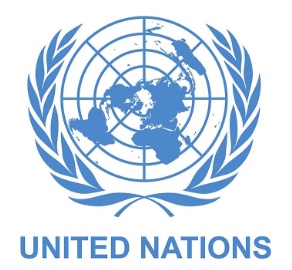
Despite specific instructions from the U.N. to only implement existing law the tribunal promptly set about creating a raft of new offences. This meant defendants could be convicted of crimes that didn’t exist at the time they were allegedly committed. This included a new catch-all crime known as Joint Criminal Enterprise or JCE. Lawyers joked that JCE stood for ‘just convict everyone.’ It meant that anyone in authority could be prosecuted even if they had been totally ignorant of a crime, actively opposed it or just been unable to prevent it.
If by any remote chance a defendant were to be acquitted then the prosecution could appeal the verdict and obtain a retrial thus exposing the accused to double jeopardy.
Appeals by defendants were routinely dismissed. In the case of General Mladic’s second appeal the lead judge in the case, Judge Prisca Nyambe submitted a blistering dissenting opinion calling for an appeal to be allowed on all counts and yet the tribunal accepted the verdicts of her three fellow judges, all academics without courtroom experience, and moved on as though nothing had happened.
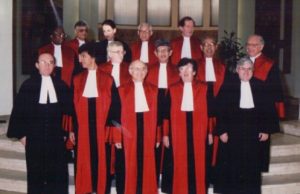
The ICTY was literally a law unto itself – judge and jury in its own cause. When challenged by Slobodan Milosevic for being a ‘false tribunal’, instead of referring the matter to a higher court in the normal way, the ICTY decided to rule on its own legality. Unsurprisingly it found in its own favour.
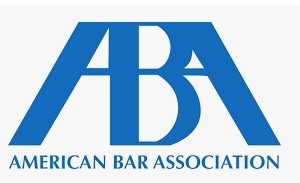
The American Bar Association was scathing in its assessment of the ICTY’s Statute identifying no fewer than 150 general and specific concerns. They included the use of secret testimony and hearsay evidence, limitations on the rights of the accused to confront accusers and the provision to allow appeals by prosecutors.
The tribunal’s principal evidence of genocide at Srebrenica was largely based on the testimony of one individual – a mentally unstable Croatian mercenary. Drazen Erdemovic had fought for all sides during the civil wars. He was a self-confessed killer who claimed to be part of a 7-man unit that executed 1,200 Bosnian Muslims in cold blood in just six hours. But there were serious problems with this so called star witness. Erdemovic had been previously judged mentally incompetent by the ICTY to stand trial himself and had done a deal with prosecutors to reduce his five year sentence.
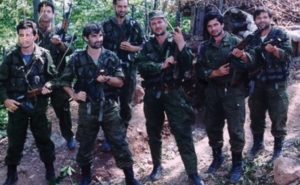
Remarkably, within a matter of weeks, he was deemed sufficiently recovered to give evidence in all the major trials, for which he was rewarded with a well-funded new life in witness protection. Even so his evidence was confused and contradictory. It was never clear who his unit had been working for when they allegedly committed their heinous war crimes. There was nothing particular to link them to the Serbs. Although the tribunal had the names and addresses of all the accomplice killers from the outset no attempt was ever made to even arrest, let alone put them on trial – so much for the pursuit of justice. The ICTY was a travesty – simply a succession of show trials. A modern day version of the medieval Star Chamber
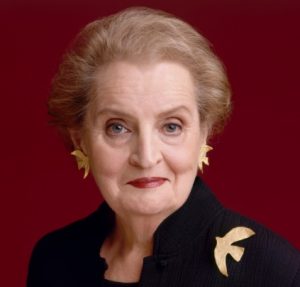
The greatest injustice of all has been the demonisation of an entire people. As so called ‘Mother of the Tribunal’, Madeleine Albright had proclaimed ‘truth the cornerstone of justice’ and promised the court would pursue the individuals responsible for war crimes not peoples. But it is Serbs who have paid the terrible collective price of being made international pariahs – falsely branded genocidal killers and heirs to Hitler simply because it suited selfish American interests.
It was Albright, of course, who famously showed the UN the spy satellite pictures which she claimed were the first hard evidence of genocide and ethnic cleansing. She went on to issue a stern warning to the Serbs that she would be watching them. Then once again secrecy descended as the images were promptly locked away from public scrutiny for 60 years. Interestingly no further pictures ever appeared.
Perhaps there was nothing to see.